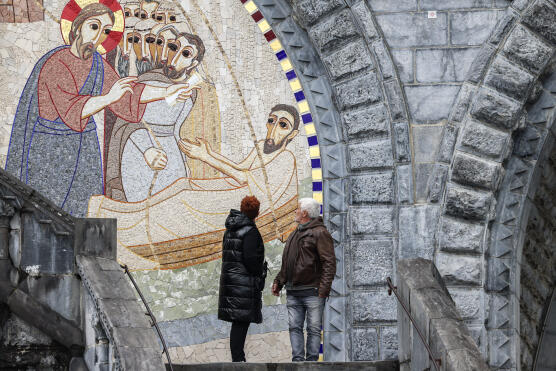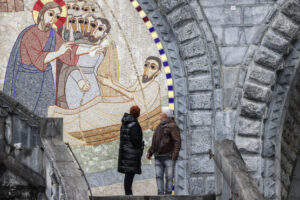
On May 11, the shrine of Our Lady of Aparecida, in the eponymous city in the Brazilian state of Sao Paulo, will inaugurate its basilica’s newly decorated southern façade. For Father Eduardo Catalfo, the rector of the world’s largest Catholic complex after the Vatican in Rome, this will be a day of celebration, a chance to rally the masses and raise funds to continue his major construction project.
Not everyone shares his enthusiasm. A petition with over 5,000 signatures was recently launched to demand the removal of the mosaics created by priest and artist Marko Rupnik. His name won’t be familiar to those who regularly attend the big arty events in Basel (Switzerland), Venice (Italy) or Miami (US). Yet in the world of sacred art, he is a star who fell from grace in December 2022, when some 40 women accused him of sexual abuse and assault perpetrated between 1985 and 2018. Yet despite his disrepute, the former Jesuit is still receiving orders for his craft.

Under the public’s growing pressure, however, ecclesiastical authorities are pondering whether they should retain the biblically inspired decorations, composed of expressive figures and shimmering colors, that adorn numerous places of worship around the world. One such work is the pope’s private chapel in the Vatican precincts, described in 2008 by La Croix as the “Sistine Chapel of the 3rd millennium.” Should they be kept in the name of presumption of innocence and copyright? Or should they be banned out of respect for the alleged victims?
For the past year, these questions have been nagging at Jean-Marc Micas, bishop of the Diocese of Lourdes (southwest France), where Rupnik decorated the façade of the Our Lady of the Rosary basilica in 2008. The prelate, who set up a think tank made up of priests, psychologists and victims, declined to answer Le Monde’s questions but said he would issue a statement on the subject in the spring.



